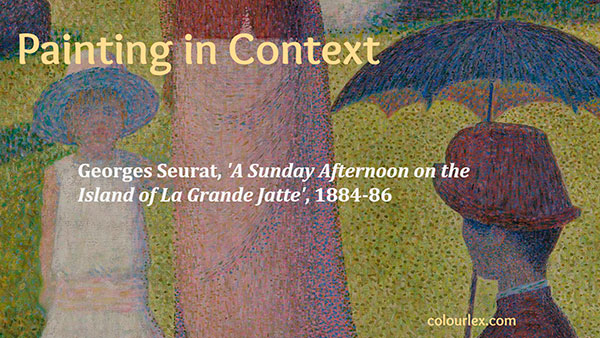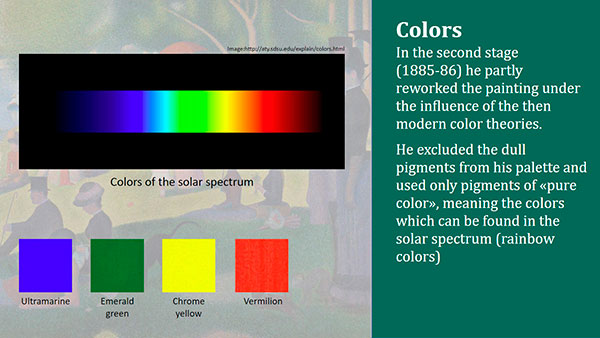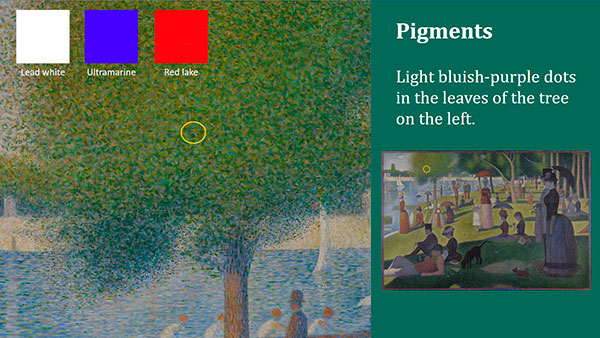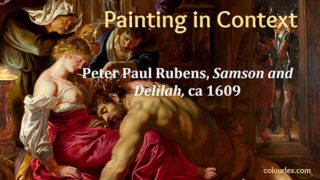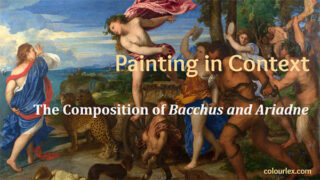Painting in Context: George Seurat, A Sunday Afternoon on the Island of La Grande Jatte
- Each presentation starts with the basic information on the painting such as its location in a museum or a gallery, the map of the location of the scene if applicable, and other pertinent details such as the history of the painting and the story depicted by the painter.
- Next, you find slides describing the painting technique of the artist and, if applicable, information on the scientific investigation of the artwork.
- The majority of the slides shows a detailed pigment analysis of the painting containing detailed views of different areas of the artwork and the pigments employed by the painter.
Seurat applied the paints in small strokes or points close to each other. In this way, the resulting color impression was not achieved by mixing the paints on the palette but by the superposition of the pure colors on the retina of the human eye. This painting is one of the most important examples of Pointillism.
In the second stage of his work, Seurat embraced the then modern color theories. He excluded the dull pigments from his palette and used only pigments of «pure color», meaning the colors which can be found in the solar spectrum (rainbow colors).
In the second stage of his work, Seurat embraced the then modern color theories. He excluded the dull pigments from his palette and used only pigments of «pure color», meaning the colors which can be found in the solar spectrum (rainbow colors).

